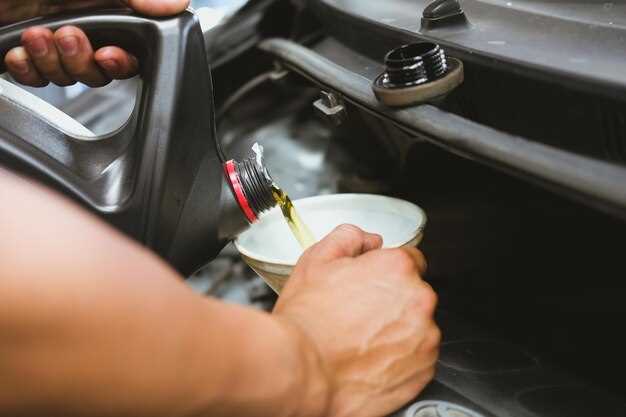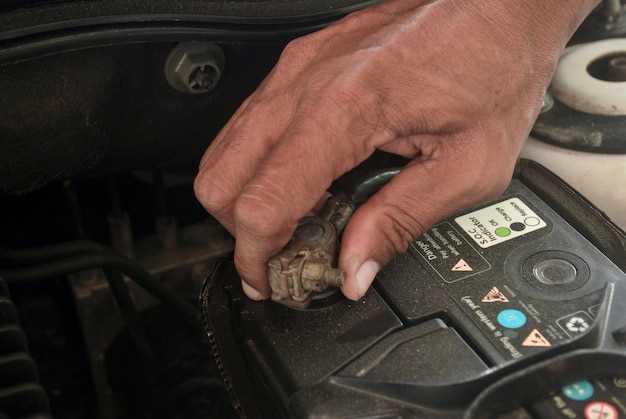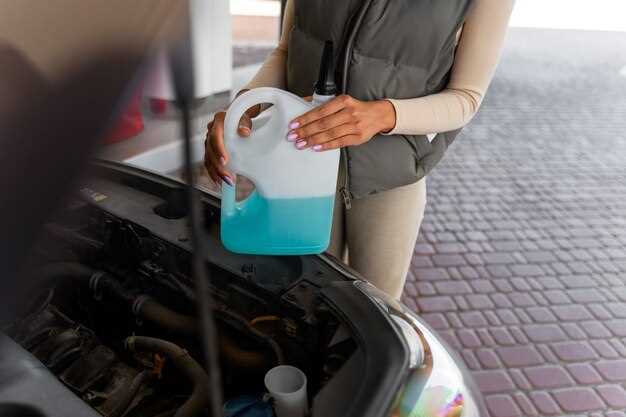
Your vehicle’s braking system is one of the most critical components ensuring your safety on the road. When it comes to the effectiveness of your brakes, the condition of the brake fluid plays a vital role. Over time, brake fluid can become contaminated, losing its ability to function properly and potentially leading to serious safety issues. Recognizing the symptoms that indicate a need for replacement of your brake fluid is essential for maintaining optimal brake performance.
One of the first signs that you may need to change your brake fluid is a decrease in braking efficiency. If you notice a longer stopping distance or a spongy feeling when you press the brake pedal, it may be an indication of degraded brake fluid. Another important sign to watch for is the presence of moisture in the fluid, as water contamination can lead to brake failure under stress and extreme conditions.
Regularly checking the color and clarity of your brake fluid can also provide insight into its condition. Fresh brake fluid is typically clear or slightly yellow, while dark or murky fluid may signal that it’s time for a replacement. Additionally, any unusual noises or vibrations during braking should not be ignored, as these could also point to a need for immediate brake fluid servicing.
Understanding the Role of Brake Fluid in Vehicle Safety
Brake fluid is a crucial component of a vehicle’s braking system, playing an essential role in ensuring safe and efficient stopping power. Here are some key aspects of brake fluid and its significance for vehicle safety:
- Transfer of Force: Brake fluid transmits force from the brake pedal to the braking components. When you press the pedal, the hydraulic pressure generated by the fluid engages the brake pads and discs, allowing for smooth and controlled braking.
- Boiling Point: Brake fluid has a specific boiling point which, if exceeded, can lead to vaporization. This phenomenon, known as “brake fade,” significantly decreases braking performance, making it imperative to monitor break fluid quality and replace it as necessary.
- Absorption of Moisture: Over time, brake fluid absorbs moisture from the environment. This moisture reduces its boiling point and can lead to corrosion of brake system components. Regular replacement is essential for maintaining the effectiveness and longevity of the braking system.
- Preventing Brake Failure: Old or contaminated brake fluid can cause brake failure, putting the driver and passengers at risk. It’s important to check the brake fluid regularly and replace it as recommended by the vehicle’s manufacturer.
In conclusion, maintaining optimal brake fluid levels and quality is vital for vehicle safety. Regular checks and timely replacement can help prevent serious issues and ensure that your braking system operates effectively when needed most.
How to Identify Low Brake Fluid Levels
One of the most critical aspects of maintaining vehicle safety is ensuring that your brake fluid levels are adequate. Low brake fluid can lead to reduced braking efficiency and may signal underlying issues. To identify low brake fluid levels, start by locating the brake fluid reservoir, which is typically found near the back of the engine bay or close to the driver’s side. The reservoir is usually translucent, allowing you to see the fluid level without opening it.
Check the reservoir markings for a minimum and maximum level indicator. If the fluid appears to be below the minimum line, this is a clear sign that a replacement is necessary. Additionally, inspect the fluid’s color; healthy brake fluid should be a clear, light yellow. Dark or murky fluid indicates contamination and the need for a proper change.
Pay attention to the brake pedal feel as well. Low brake fluid levels can result in a spongy or soft brake pedal, which is a signal that your braking system requires immediate attention. Furthermore, if you notice the brake warning light illuminated on your dashboard, this could also indicate low fluid levels and should not be ignored.
Regularly checking your brake fluid levels can prevent potential hazards on the road. If you do find that your brake fluid is low, it is advisable to top it off with the manufacturer-recommended type and seek a professional inspection to determine the cause of the loss and any needed repairs.
Signs of Contaminated Brake Fluid

Contaminated brake fluid can compromise your vehicle’s braking performance and safety. One of the primary indicators of contamination is a change in color. Fresh brake fluid is typically clear or light amber. If you notice a dark, cloudy, or opaque appearance, it may suggest the presence of moisture or debris, indicating a need for replacement.
Another sign is the presence of bubbles or foam in the fluid. This often occurs when the fluid absorbs moisture, leading to air trapped within it. Air contamination can result in a spongy or unresponsive brake pedal, impacting your vehicle’s stopping power.
Additionally, if you detect a burnt smell or an unusual odor when you check your brake fluid, it could indicate overheating or degradation of the fluid. Brake fluid should not emit any strong scents, so a noticeable odor is a clear signal for testing and potential replacement.
Finally, if your brake warning light illuminates on the dashboard, it may also suggest an issue with the brake fluid. While this can be caused by various factors, it’s essential to check the fluid condition immediately, as neglecting it can lead to severe brake failure.
Recognizing Changes in Brake Performance
Maintaining optimal brake performance is crucial for vehicle safety, and one key aspect is the condition of the brake fluid. As the brake fluid ages or becomes contaminated, it can lead to noticeable changes in how your brakes respond. Understanding these changes can help you determine when it’s time to change your brake fluid.
One of the first signs of reduced brake performance may be a soft or spongy brake pedal. If you notice that you have to press the pedal further than usual to engage the brakes, it could indicate that the brake fluid has absorbed moisture or has become contaminated. Brake fluid is hygroscopic, meaning it absorbs water over time, which can affect its boiling point and, consequently, the effectiveness of your brakes.
Additionally, a longer stopping distance can signal that your brake fluid needs attention. If you find that your vehicle takes longer to come to a complete stop, it may be time to inspect the brake fluid. The fluid plays a vital role in hydraulic braking systems, and any degradation can lead to inefficiencies in power transfer to the brake components.
| Change in Brake Performance | Possible Causes |
|---|---|
| Soft or spongy brake pedal | Moisture absorption or contamination of brake fluid |
| Longer stopping distance | Degraded brake fluid affecting hydraulic efficiency |
| Unexpected brake fade | High boiling point of fluid compromised by water content |
| Brake warning light activation | Possible fluid level drop or pressure issue |
Paying attention to these indicators is essential for maintaining braking safety. Regularly checking the brake fluid level and condition, along with the overall performance of your brake system, ensures that your vehicle remains safe to drive. If you observe any of the changes mentioned, consider having your brake fluid replaced to restore optimal braking performance.
When to Schedule a Brake Fluid Replacement

Scheduling a brake fluid replacement is essential for maintaining optimal braking performance. Generally, it is recommended to replace brake fluid every 1 to 2 years, depending on your vehicle manufacturer’s guidelines. If you frequently drive in harsh conditions, such as heavy traffic, mountainous areas, or extreme weather, consider changing the fluid more often.
Additionally, keep an eye on the color and consistency of the fluid. Fresh brake fluid is usually clear or light yellow, while older fluid may appear darker and can indicate contamination. If you notice a change in color or detect a burnt smell, it’s time to replace it.
Pay attention to the feel of the brake pedal as well. If you experience a spongy or mushy brake pedal, this could signify moisture buildup in the brake fluid, which drastically affects braking efficiency. Regular inspections of brake fluid levels are crucial–if the fluid is low, it should be topped off or replaced.
Routine vehicle maintenance checks also provide a perfect opportunity to examine brake fluid. Always consult your vehicle’s service manual for specific recommendations on when to replace brake fluid, ensuring safe and effective braking performance over time.
DIY Brake Fluid Check: Tools and Steps
Performing a brake fluid check is essential for maintaining your vehicle’s braking system. To get started, gather the necessary tools: a clean container for fluid collection, a turkey baster or siphon pump, a funnel, and a pair of gloves for safety. You may also need a flashlight to inspect the reservoir clearly.
Begin by locating the brake fluid reservoir, usually found near the back of the engine bay. Remove the cap and examine the fluid’s color and level. Healthy brake fluid is typically a clear or slightly yellow hue. If it appears dark or contaminated, it likely requires replacement.
Use a turkey baster to remove some of the old fluid and discard it properly. After draining, you can add new brake fluid that meets your vehicle manufacturer’s specifications. Pour the new fluid into the reservoir using a funnel to prevent spills.
After filling, check the fluid level to ensure it is within the recommended range. Replace the cap securely. It’s crucial to clean any spilled fluid immediately, as it can damage your vehicle’s paint and components.
Finally, test drive your car gently to ensure the brake system operates smoothly. If you notice any irregularities, consider consulting a professional for further inspection.
